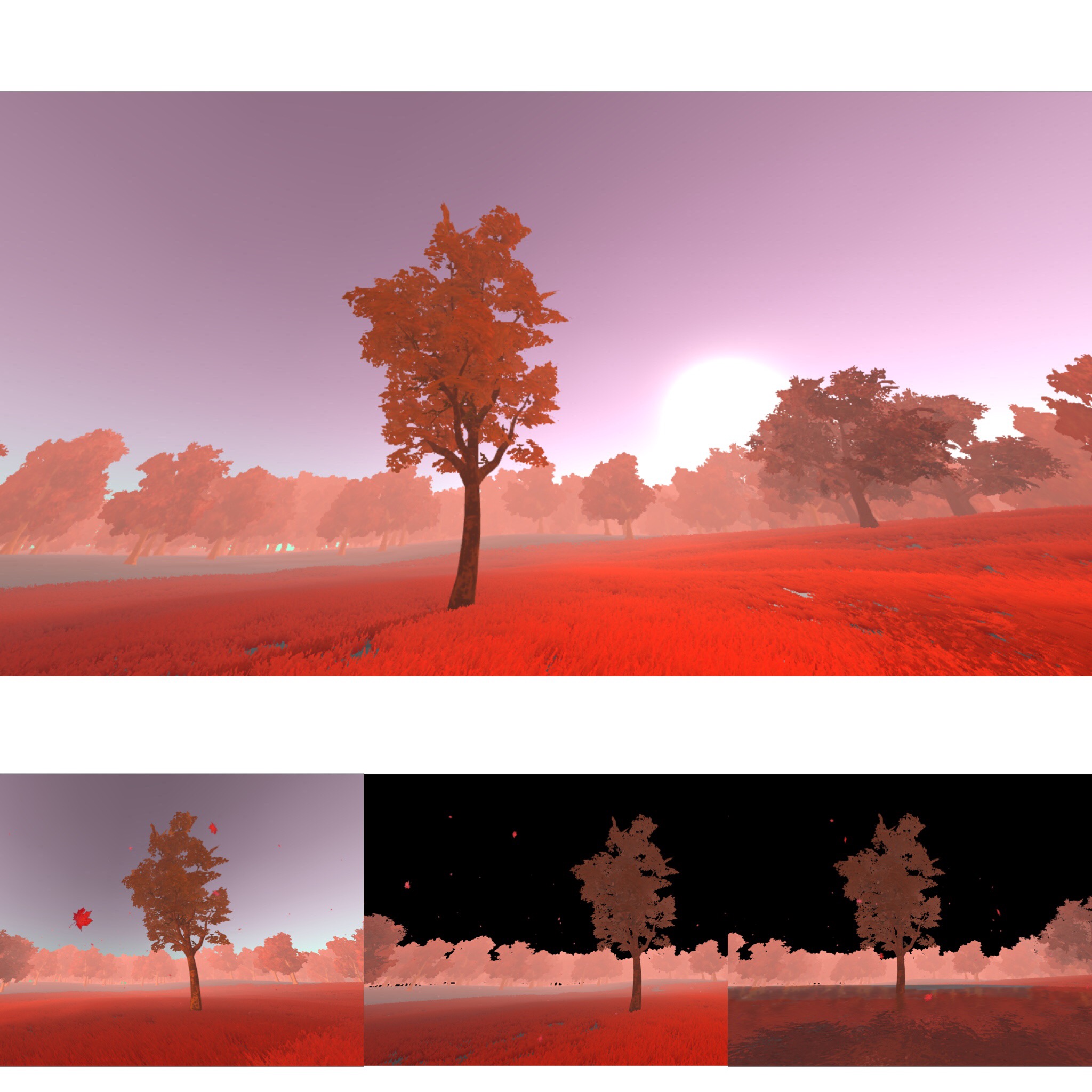When We Die VR
| Outcome
We decided to create a safe space for hard conversations, in particular the conversation around mortality and death. We decided to use VR as a medium as a way to highlight the solitary experience that death is.
| Opportunity
We were tasked with creating an experience that will use story-telling and new technologies for a project centered around social good.
When We Die is an experience intended to help participants broach one of the most difficult and still taboo topics in modern American society - the end of life. It is a two-part virtual reality experience that guides users through the process of contemplating their own mortality. The first act consists of a guided meditation on one’s own mortality and the second presents brief excerpts of interviews from two end-of-life experts, a neurologist specializing in aging and dementia, and a hospice nurse, who share their professional and personal points of view.
abstract
The ability to contemplate our finite existence is a fundamental part of the human experience, but we rarely reflect on it in our daily lives until it is often too late or under traumatic circumstances. This is particularly apparent in Western culture where death has been largely removed from modern life and when apparent, is an intensely medical process.
Granted, it is uncomfortable to acknowledge our eventual nonexistence, our vulnerability and fragility, and the idea that all that we have in this world – material and immaterial – will be lost. However, if we are able to confront the idea of our mortality more often, perhaps it can be motivating, even clarifying. It can help us focus on the things that are truly important to us, as well as prepare for when the inevitable occurs.
Part 1: confronting the self
A guided mediation asks users to open themselves to the idea of their nonexistence using the analogy of a tree cycling through seasons. The imagery consists of an open field with a single tree in the foreground and takes on the style of a color film negative. In other words, a world that is both familiar and dissimilar to their own. The world cycles from night, into day, and then back into night. As the meditation brings the user back to their awareness, the world transitions to scene 2.
part 2: outside perspectives
The user is transported to a colorful night sky above and a calm and reflective ocean of water below. In the sky are glowing, rotating shapes. An audio cue informs the users that they may select from different audio clips by holding their gaze momentarily over the shapes. The audio clips are snippets from our interviews with our experts, Stephanie Hope, RN, BSN & Gayatri Devi, MD.
Recognition
Engadget: Exploring death through the isolation of VR
Crossfader Magazine: What 'VR' gets wrong about reality, virtual or otherwise
Harvard Divinity School - Demo: Expand Consciousness via Contemplative Practice
HDS News & Events: Bringing Consciousness to Virtual Reality
The Sociable: Virtual Reality Takes Consciousness Research into Mystic Realms of the Divine Play
Category: Virtual Reality (VR), Unity, programming
Date: December 2016
Toolkits: Unity, Oculus Rift
Collaborators: Dana Abrassart, Leslie Ruckman
Personal Highlight: The ability to finally talk about a sensitive subject in a way that I thought it made a difference
thinking Process
This started with the intention of creating a safe space for hard conversations. The team originally wanted to create this around sexual education, but after a friend of mine died unexpectedly, we decided to pivot the project around death and how it's usually addressed (or not) in the western world.
It started with a conversation around a lecture Dana had attended a couple of years back that involved terminally-ill patients using psychedelics in order to come to terms with their own mortality. During the lecture, it was mentioned how many of these patients would come for a single session and that they expressed having ‘spiritual’ experiences during the sessions. Many of them cited feelings of relief and said they felt as though they had come to terms on some level with their impending death.
From there, we knew we wanted to explore the concept of Dying in a Western World. We spoke to Stephanie Hope, who’s a trained nurse in hospice and end-of-life. After speaking with her, we were all very touched about the way she spoke about death, and decided to do a guided meditation on mortality and dying.
Story Design
Visual inspirations and storyboard below:
James Turrell
Richard Mosse
Richard Mosse
Initial hyperlapse of the first scene as we were working out kinks:









